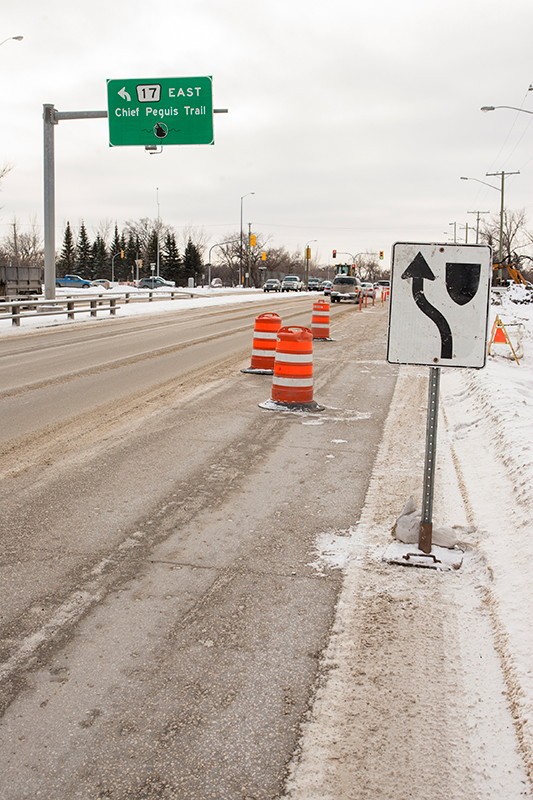Chief Peguis extension creates more problems
Building more infrastructure to support automobiles is unsustainable
Everyone knows the City of Winnipeg is falling behind on infrastructure maintenance - the money isn’t flowing fast enough for the city to catch up.
According to reports from 2009, around $168.1 million more per year is needed to get the city’s roads to “appropriate” levels.
So the city has come up with a solution: build more infrastructure to generate the revenue to maintain the old.
Stage one of the Chief Peguis Trail extension in North Kildonan, which opened in early December 2011, was heralded by city council and citizens alike.
The original Chief Peguis bridge across the Red River, which opened in 1990, caused drastic increased traffic levels along many of North Kildonan’s East-West avenues, and the extension was seen as needed in order to ease this problem.
The City and its consultants didn’t realize that this would just be displacing the problem. As a result of the extension, Gateway, the only street with access to the extension, has seen an exponential increase in traffic.
Further, Lagimodière now has another set of traffic lights on the stretch from the Perimeter to Regent Avenue, bringing the total to nine.
Three of these traffic lights are within one kilometre.
From beginning to end, the total cost of the Chief Peguis extension project will be $245 million. Upon opening, $50 million of this was paid. The project will cost approximately $6.5 million more per year as part of a 30-year maintenance clause in the public-private partnership deal the city entered.
All externalities aside, the $245 million price tag is a good value for such a stretch of expressway - but should it have been built in the first place?
I don’t believe the ends justify the means.
Once again, the problem is not the price of the extension - the reason for building the extension is the problem.
Council believes the problem is we can’t get enough cars down the street, so we need to build wider roads.
Why not try to discourage people from driving?
Building bigger roads doesn’t relieve traffic - it promotes even more driving and sprawl.
The added traffic that comes with the extension creates problems on nearby roads.
The reality is that relief comes from alternatives to the automobile.
Building bigger and catering more to the automobile commuter doesn’t decrease traffic problems - if anything they will increase.
What is the net financial benefit of building this extension? According to the city’s 2012 operating budget, the city gets most of its operation revenues from property taxes, which is common for most cities.
Does the Peguis Trail extension improve the City’s ability to generate property tax? Not at all.
Consider this: the property tax revenue generated from a single-family dwelling is barely enough to maintain the road in front of it, never mind the sewers, catch basins, water mains, water treatment, emergency services and all the many other services our tax dollars go toward.
When more infrastructure is built to accommodate single-family dwellings, there is a net loss of operation funds for the city. To prevent this net loss we can do three things: beg the provincial and federal government for operating grants, increase taxes or increase density.
Strong Towns, a group of urban planners out of Minnesota, argue that local governments benefit from this outward growth on the short term, but assume the long-term liability of maintaining the new infrastructure.
Taking near-term funds for long-term liability is one element of a Ponzi scheme.
The term “sustainable development” has been so overused recently that it almost loses its meaning.
Sustainable development should mean meeting our needs without jeopardizing future people’s ability to meet their needs.
This isn’t just a macro problem; we have to look locally as well.
Funding infrastructure repairs by building more infrastructure is the exact opposite of sustainability.
By building projects like this we are doing nothing but passing the buck to our children.
City council needs to take some time to look at the long term instead of just the election term.
Steve Snyder is an urban design and municipal affairs enthusiast who writes on Winnipeg issues. Follow him on Twitter @steveosnyder.
Published in Volume 67, Number 13 of The Uniter (November 28, 2012)







